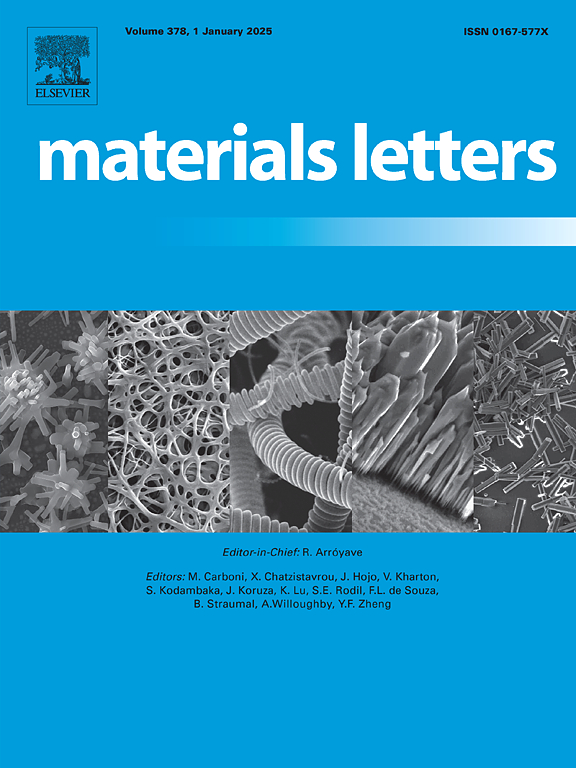Thin-film transition metal dichalcogenide alloys grown by patterned films of stacked Mo and W
IF 2.7
4区 材料科学
Q3 MATERIALS SCIENCE, MULTIDISCIPLINARY
引用次数: 0
Abstract
We report a chemical vapor deposition method where transition metal dichalcogenide growth is modified by changing the thickness and stacking sequence of patterned Mo and W composite films. The top metal thickness was kept constant at ∼ 200 nm while the bottom metal thickness was varied. For samples with W covered by Mo with W:Mo thickness ratios of approximately 1:20, 1:4 and 1:1, Mo1-xWxS2 alloys were formed with concentrations of approximately 0–0.25, 0.25–0.50 and 0.75–1, respectively. With the stacking order reversed, there was no identifiable Mo present in the growth from the 1:20 and 1:4 Mo:W samples; however, for 1:1 Mo:W samples, about one third of the material had a concentration of ∼ 0.25 while the remaining two thirds had a concentration of 0.75–1.0.

求助全文
约1分钟内获得全文
求助全文
来源期刊

Materials Letters
工程技术-材料科学:综合
CiteScore
5.60
自引率
3.30%
发文量
1948
审稿时长
50 days
期刊介绍:
Materials Letters has an open access mirror journal Materials Letters: X, sharing the same aims and scope, editorial team, submission system and rigorous peer review.
Materials Letters is dedicated to publishing novel, cutting edge reports of broad interest to the materials community. The journal provides a forum for materials scientists and engineers, physicists, and chemists to rapidly communicate on the most important topics in the field of materials.
Contributions include, but are not limited to, a variety of topics such as:
• Materials - Metals and alloys, amorphous solids, ceramics, composites, polymers, semiconductors
• Applications - Structural, opto-electronic, magnetic, medical, MEMS, sensors, smart
• Characterization - Analytical, microscopy, scanning probes, nanoscopic, optical, electrical, magnetic, acoustic, spectroscopic, diffraction
• Novel Materials - Micro and nanostructures (nanowires, nanotubes, nanoparticles), nanocomposites, thin films, superlattices, quantum dots.
• Processing - Crystal growth, thin film processing, sol-gel processing, mechanical processing, assembly, nanocrystalline processing.
• Properties - Mechanical, magnetic, optical, electrical, ferroelectric, thermal, interfacial, transport, thermodynamic
• Synthesis - Quenching, solid state, solidification, solution synthesis, vapor deposition, high pressure, explosive
 求助内容:
求助内容: 应助结果提醒方式:
应助结果提醒方式:


